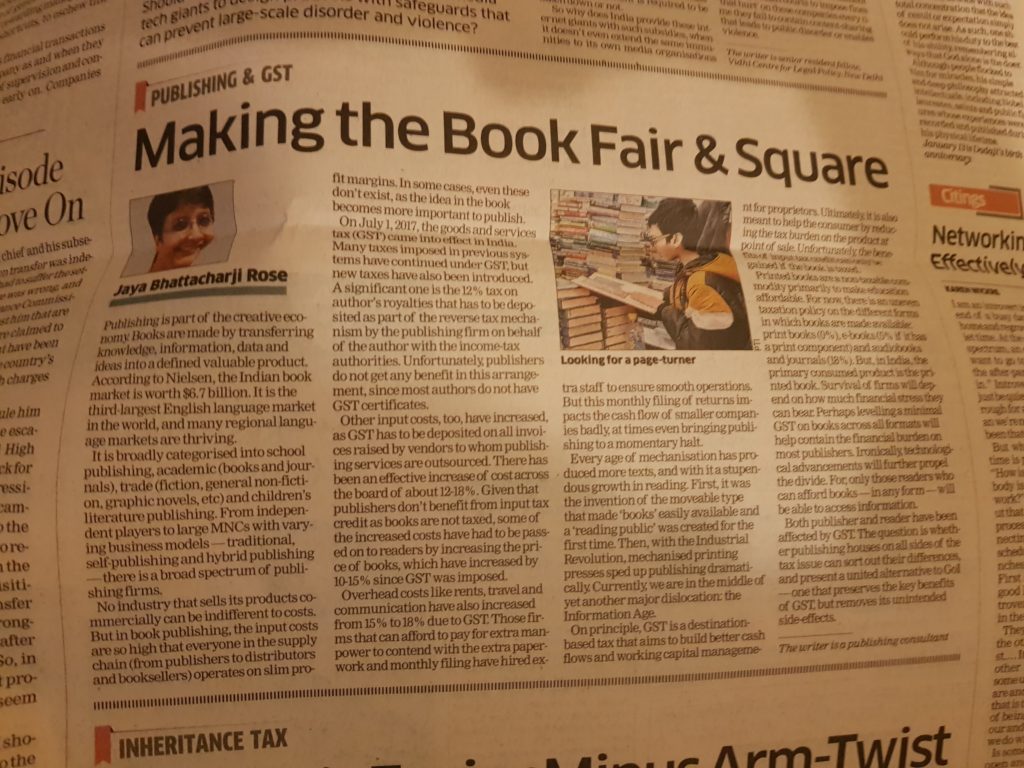How culture filip can fast-forward pandemic recovery
On 20 Dec 2020, I wrote an article for the Asian Age on how various governments are supporting their cultural sectors. The article was published in the Deccan Herald on 21 Dec 2020 as well. Here is the original url: https://www.asianage.com/life/art/201220/is-govt-listening-culture-fillip-can-fast-forward-post-pandemic-recovery.html . The longer version of the article is reproduced below.
****
Creative economy refers to a range of economic activities where value is derived from the generation or exploitation of knowledge and is copyright relevant— music, writing, art, fashion, design, and media. Also, a wider range of production activities including goods and services that rely on innovation, research and development such as film, museums, galleries and photography. UNESCO’s Cultural Times (2015), the first global map of the cultural and creative industries, acknowledges the societal value of arts and culture. It assesses the contribution of cultural and creative industries to economic growth. It estimates that they generate US$250 billion in revenue a year, creating 29.5 million jobs worldwide.
On 11 March 2020, the WHO declared a Covid19 pandemic; drastically impacting national economies. Essential industries were permitted to function but other sectors suffered terribly. Many governments did not offer any support and certainly not for the creative industries. But there were some exceptions to the rule like Germany. In June 2020, under a programme called New Start for Culture, it earmarked €1bn for arts. In Nov 2020, under Germany’s infection protection law, culture has a new legal status and is no longer classified as entertainment. Hence, cancelling arts events in the pandemic might become difficult. On 19 March 2020, France did something similar by modifying the rules of the country’s specific unemployment scheme for artists and technicians. It announced that artist-authors could benefit with a lump sum from a solidarity fund. Italy set aside €130 million for authors and audio-visual sectors etc. On 11 December 2020, the UK’s Arts Council announced that the Culture Recovery Fund marked its £1 billion milestone, with £654 million being invested in arts and cultural organisations, part of its £1.57 billion support package. On 30 Nov 2020, Germany approved a culture budget of €2.1 billion ($2.5 billion), nearly at par with the European Union’s budget for culture of €2.8 billion to be distributed over the next seven years.
In the $2 trillion coronavirus stimulus bill announced in the USA, approximately $75 million was for the National Endowment for the Arts. In South Africa, where 7% of the workforce are in this sector, 45% are informal, and contribute 1.6% to their GDP. The National Arts Council committed its support to the artists by continuing to pay them during the pandemic.
In May 2020, Jacinda Ardern, the PM of New Zealand, announced a $175 million package for ‘decimated’ arts – a resilience grant. The creative sector contributes nearly $11 billion a year to NZ’s GDP and employs 90,000 people. So, the New Zealand Libraries Partnership Programme (NZLPP) with a funding package of $58.8 million will support librarians and library services and assist them to support community recovery. Ardern said “A healthy cultural sector has many positive flow-on effects for other important parts of our economy, such as technical production, hospitality, venues and domestic tourism.”
According to the World Bank (Aug 2020), in 2013, creative industries around the world generated revenues of over $2 billion and employed 29 million people. The market for creative goods is estimated to be $508 billion as of 2015. In 2015, developing economies exported more than 250 billion creative products including design goods, fashion, and films. Top exporters included China, Turkey, India, Mexico, El Salvador, and Pakistan. In the United States, the non-profit arts and culture industry generated $166.3 billion of economic activity in 2015, supporting 4.6 million jobs, while receiving only $5 billion in arts allocations by the public sector. A phenomenal ROI at 3326%!
According to Megha Patnaik’s Measuring India’s Creative Economy report (May 2020), it is estimated that approximately 1.1 million workers are employed in this sector, contributing 0.58% of the GDP (2016-17). This is less than the international average as measured by WIPO where the mean contribution is 5.48%. But in India this can be partially attributed to the lack of comprehensive data outside the formal manufacturing sector. Patnaik states that with the right growth impetus through policy and markets, the creative economy can create a large share of jobs in the future. Sanjoy Roy, co-founder Jaipur Literature Festival, confirms this by estimating that during the six days there are more than 500,000 footfalls (approx.) and 110,000 unique visitors, and the local economy benefits manifold. Apart from the immediate impact on the hospitality industry, craftspeople, jewellers etc, the long-term benefits have been the revival of the restoration of heritage buildings, reopening of museums, promoting Rajasthan as a tourist/wedding destination.
In fact, culture can accelerate socio-economic recovery from the pandemic as stated by the World Bank and UNESCO in “Culture in City Reconstruction and Recovery” (2018). The framework, entitled CURE, offers principles and strategies to apply in city reconstruction and rehabilitation in post-crisis situations. There are four prominent ways in which culture positively impacts community resilience – by building social cohesion; there is a direct relationship between the arts and culture and social and psychological well-being; fostering diverse cultural expressions offers effective ways of dealing with post-crisis trauma and reconciling affected communities; and finally, the arts and culture offer critical tools for narrative expression, community engagement, and creating experiences of collaboration. These are critical insights that policymakers need to recognise in promoting sustainable and inclusive recovery with full ownership from communities particularly after the devastating effect of the pandemic. Investing in creative industries and developing cultural capital may be worth exploring.
2 January 2021

